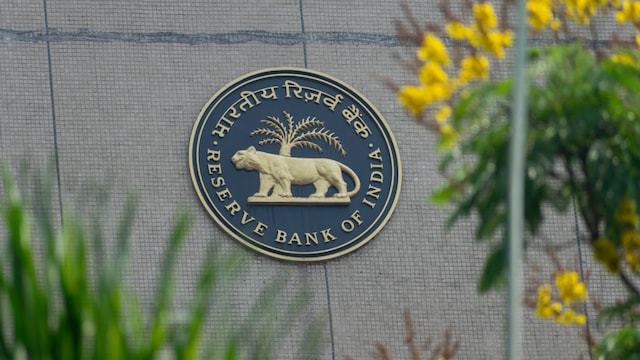SOURCE : NEW18 NEWS
Last Updated:May 24, 2025, 13:04 IST
The RBI revised its Economic Capital Framework on May 15, 2025, adjusting market risk buffers, widening buffer ranges for stability risks, and updating surplus distribution policy.
The new ECF framework comes into effect from the financial year 2024–25.
The Reserve Bank of India (RBI) has revised its Economic Capital Framework (ECF), marking a significant recalibration of its risk provisioning and surplus distribution mechanisms. The Central Board of the RBI approved the changes during its 605th meeting held on May 15, 2025. The revision follows a five-year periodic review, as recommended by the Bimal Jalan Committee, which had originally proposed the framework in 2019.
Following this, during its 616th meeting on May 24, the RBI’s board approved a dividend payout of record Rs 2.69 lakh crore for the central government for the financial year 2024-25.
Recommended Stories
What is the ECF?
The Economic Capital Framework governs how much capital the RBI should maintain to cover its various risks and how much of its surplus income can be transferred to the Government of India. It is crucial to strike a balance between ensuring the central bank’s financial resilience and supporting the government’s fiscal needs through surplus transfers.
Why A Review Was Needed
The original ECF, adopted in August 2019, has been in operation for nearly five years. RBI initiated an internal review of the framework, taking into account its operational experience, changing macroeconomic conditions, and shifts in the central bank’s asset profile. The review was aimed at enhancing the framework’s ability to respond to emerging risks while preserving its core objective of maintaining a resilient balance sheet.
Key Changes in the Revised ECF
1. Market Risk Adjustments
Integrated Risk Approach: The computation of market risk buffers will now include both on-balance sheet and off-balance sheet portfolios, making it more comprehensive.
Inclusion of Minor Currencies: Foreign currency assets in minor currencies will now be considered in market risk assessments.
Flexible Resilience Range: The Central Board can maintain market risk buffers within a range defined by Expected Shortfall (ES) at 99.5% and 97.5% confidence levels. This offers flexibility based on prevailing market conditions.
2. Credit and Operational Risk
No Change: The current provisions for credit and operational risks remain unchanged, reflecting stability in these areas.
3. Monetary and Financial Stability Risk
Widened Buffer Range: The buffer range for monetary and financial stability risks has been expanded from the earlier 4.5%-5.5% to 3.5%-6.5% of the balance sheet size. This gives the Central Board more room to manoeuvre in response to macroeconomic developments.
4. Contingent Risk Buffer (CRB)
Revised Range: The CRB, which covers buffers for monetary, financial, credit, and operational risks, will now be maintained in the range of 6% ± 1.5% (4.50%-7.50%) of the balance sheet size, replacing the earlier fixed level of 6.5% (with a lower bound of 5.5%).
5. Surplus Distribution Policy
Equity Threshold for Surplus Transfer: Surplus will only be transferred to the government if the RBI’s available equity exceeds 7.5% of the balance sheet size, after accounting for any shortfall in market risk buffers.
No Transfer Below Minimum Threshold: If the available equity falls below the lower bound of its requirement, the RBI will withhold surplus transfers until the minimum level of realized equity is restored.
Objective: Stability with Flexibility
According to the RBI, the revised framework preserves the fundamental principles of the original ECF while introducing operational flexibility. It is designed to ensure that the central bank can respond more effectively to macroeconomic volatility without compromising its balance sheet strength or its ability to contribute to the government’s fiscal resources.
The new ECF framework comes into effect from the financial year 2024–25.
The revised Economic Capital Framework underscores the RBI’s commitment to maintaining financial prudence while adapting to changing economic dynamics. With enhanced flexibility in risk provisioning and surplus distribution, the new framework aims to balance the dual objectives of central bank resilience and fiscal support to the government — a critical move as the country navigates an increasingly complex global economic environment.
- First Published:
May 24, 2025, 12:59 IST







